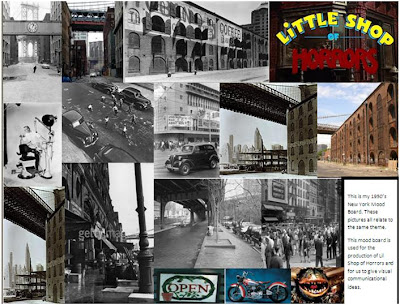Director – They control a film's artistic and dramatic aspects, while guiding the technical crew and actors. Also this is a person directs the actors and crew in the making of a film.
Producer - A film producer or movie producer is someone who selects a screenplay, initiating the process of film making. The producer oversees the whole process including coordinating, supervising and controlling matters such as fund-raising, hiring key personnel such as the film director.
Designer - A designer is person who designs. More formally, a designer is an agent that "Specifies the structural properties of a design object”.
Lighting Designer - The role of the lighting designer (or LD) within theatre is to work with the director, set designer, costume designer, and sometimes the sound designer and choreographer to create an overall 'look' for the show in response to the text, while keeping in mind issues of visibility, safety and cost.
Musical Director – This is just someone who directs music such as an; orchestra, The director of music for a film, The director of music at a radio station, The head of the music department in a public school, The co-ordinator of the musical ensembles in a university or college, The head bandmaster of a military band, The head organist and choirmaster of a church or an Organist and Master of the Choristers, a title given to a Director of Music at a Cathedral, particularly in England.
Stage manager - is one who has overall responsibility for stage management and the smooth execution of a production.
Stage crew - Sets the stage and helps with the scenery design, set hire, rostra/staging/treads and flat hire as well as sound and lighting design and fit up.
Choreographer – this may refer to the design itself but it’s just is the art of designing sequences of movements in which motion, form, or both are specified.
Props Master - A prop master is a professional who supervises the use of properties, better known as props, in a theatrical production or on a film.
Publicist - is a person whose job is to generate and manage publicity for a public figure, especially a celebrity, a business, or for a work such as a book, album or film . Most top-level publicists work in private practice, handling multiple clients.
The image above is showing a stage manager directing a production. You can see he has a sheet in his hand which probably is a time sheet where he knows what time and when everything in the production should take place. He's also got an ear piece and that shows he can communicate with everyone at all times.
Construction manager – This entails the planning, scheduling, evaluation, and controlling of construction tasks or activities to accomplish specific objectives by effectively allocating and utilizing appropriate labor, material, and time resources in a manner that minimizes costs and maximizes customer/owner satisfaction
Dresses/Wardrobe assistant - This includes - - Buying and hiring suitable costumes and accessories
- Helping to make or assemble costumes
- Mending, altering, cleaning, washing, ironing, packing and storing costumes
- Fitting performers with costumes and accessories
- Organizing and keeping records of outfits
- Making sure all items are ready to wear when needed























